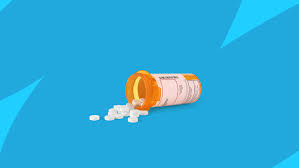The solubility of the drug is a key factor in determining its bioavailability, or how much of an administered dose reaches systemic circulation and becomes available for therapeutic action. The solubility of a drug determines its dissolution in the body fluids which indicates its absorption and efficacy.
More soluble drugs are usually better in terms of bioavailability. An example of this is seen in a study published in the Journal of Pharmaceutical Sciences where researchers show that increasing the formulation solubility leads to an absorption increase of 50% [9]. According to the FDA, solubility problems can impact as many as 40% of new drugs developed. Solubility accounts for a key parameter in oral formulation development because solubility affects the rate and extent of absorption.
Drugs are categorized using the Biopharmaceutics Classification System (BCS) based on their solubility and permeability. All BCS class I drugs are expected to possess the characteristics of good solubility, high permeability and consequently greater bioavailability. BCS class II drugs, which are poorly water soluble but highly permeable may have lower bioavailability unless formulated with solubilising agents.
One example of how drug solubility affects bioavailability is the drug Fenofibrate. Fenofibrate: Formulation with solubilizers significantly improves oral bioavailability — European Journal of Pharmaceutics and Biopharmaceutics | OA Drug Design This subsequently increased the systemic availability of the drug by a factor of 20 due to enhanced solubility.

Dr Sarah Thompson, a pharmaceutical scientist, says: "The solubility of a drug is often the bottleneck in its absorption and effectiveness." This clearly signals that those issues with solubility needs to be addressed early during the drug development process.
An example from this area is the way nanotechnology can be used to formulate poorly soluble drugs. According to a 2023 study in Nature Nanotechnology, formulations with nanoparticles can boost drug solubility by up to 500 times relative to conventional formulations. This process improves drug solubility in biological fluids, and thereby increases bioavailability.
By knowing the principles behind it and applying them, drug solubility can be better understood and manipulated to give rise to more potent medications with increased therapeutic results. To learn more about the impact of drug solubility on delivery, follow this link to read a piece expanding upon that topic.
